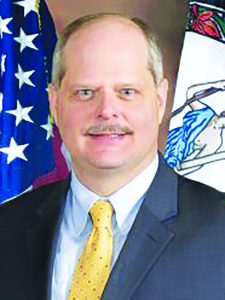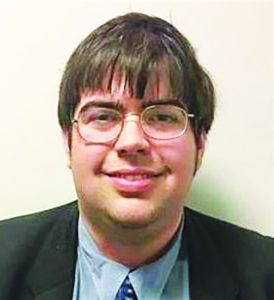The Henry County Board of Supervisors will hold a public hearing on Tuesday, June 25, to get input on a proposed real estate tax increase, from 55.5 cents to 62-cents per $100 of assessed value. The hearing is set to get underway at 6 p.m. in the Summerlin Meeting Room, 1st floor of the Henry County Administration Building.

Henry County Administrator Dale Wagoner recalled the proposed tax increase was one of three options shared with the board at a June 11 work session.
“It’s not a definitive option, it was one of the options shared with the board as a way to generate the additional revenue needed to meet the required funds for the school system,” he said.
The other two options presented at the meeting include using funds from the county’s saving account and reallocating funds from other departments, or a combination of the three options.
“I know no one likes a tax increase. It’s tough on many of our residents, it’s really tough for many of our residents to have this trouble paying their electric bill, food, and other things and adding a tax increase on it makes it tough,” Wagoner said.
However, just like the other county costs have increased, so have the school system’s costs, he said.
“You really only have a couple of options, you’ve either got to raise taxes or you’re going to cut costs,” he said. “Because it’s mandatory to provide the funding to the schools, any cut costs would have to be to other county services – whether it be law enforcement, public safety, parks and recreation, or any of the other categories.”
Henry County last approved a real estate tax increase in 2017, but has managed for seven years to avoid another, even as other costs have increased, including pay raises.

Wagoner said county staff received a five percent cost of living (COL) salary adjustment in Fiscal Year (FY) 2024; a six percent COL salary adjustment was given in FY23, and a five percent COL salary adjustment was given in FY22.
There was no salary adjustment in FY21.
“In FY22, Sheriff’s deputies pay was increased on Jan. 1, 2022, by $4,160. However, it became part of their pay with the six percent on July 1, 2022,” he said.
Under the Evergreen Compensation and Classification Study presented to the board last year, Wagoner said the county chose the Hybrid Year option, which was capped at 10 percent.
“We chose that option because it was the least expensive, but it also let us address compression within the organization,” he said.
For example, Wagoner said an employee that had 28 years of service would not automatically get placed on Step 28. Instead, they got a portion of that to a maximum of the 10 percent pay raise.
Wagoner said the county chose the Hybrid Year option because the fully implemented plan would have cost the county millions.
“We knew we would never get funded for that, so we took a less costly approach so we could address the issues somewhat, and the main thing, address pay equities in comparison to other localities like starting pay,” he said. The substantially less pay for sheriff’s deputies when compared with other localities is what really started the discussion.
On average, Wagoner noted the county’s implementation of the pay study cost an overall pay increase of 4.5 percent.
“But no individual got more than a 10 percent increase. That was basically, solely, as a cost containment measure because we only had $400,000 to implement it,” he said.
Wagoner said the school division decided to implement the Class Year Parity option.
From his understanding, Wagoner said for someone who has been a teacher for 25 years, parity means they would be on Step 25 of the table.
“So, it was a year for year. For county employees we didn’t implement that because we capped it at 10 percent per employee. No employee got more than 10 percent on the county side,” he said.
Wagoner said the school system’s recommendation basically addressed all compression issues while the county’s only partially addressed compression issues.
“That was a huge issue that we had. From my understanding the school system already had a pay classification plan, we did not. So, teachers and administrators were already on the table, they were already getting STEP increases, and things like that over the years, while our employees had never even gotten the option for any of those,” he said.
During public sessions, Wagoner noted it’s been said the starting pay for teachers in the county’s school system would be among the most competitive in the region. “Even in the original budget before they got the additional money.”
Teddy Martin II, school board chairman and of the Reed Creek District, said school staff received a six percent raise last year, and they will receive a five percent raise for the upcoming school year.
“Actually, they’ve done pretty good on raises in my time, but before that, they didn’t get raises for like ever. So, in 2022-2023 it was a five percent increase, 2021-2022 it was roughly a three percent increase, 2020-2021 it was no increase because of COVID,” he said.
For FY 2019-2020, Martin said there was a 3.5 percent increase, a one percent increase from 2018-2019, and basically no increases from 2010 to 2018.
“There were sometimes there were some modest adjustments, but folks weren’t getting ‘Steps,’ which meant that people were falling behind on the scale,” he said.
Martin said the Evergreen study noted that even with some of the pay increases t in the division since about 2017, the school system is still an estimated 6 to 7 percent behind most comparable divisions in the region.
“Even with the increase we’re proposing here, where we’re going to do five” percent, “and the state’s doing three, we’re only gaining two. So, functionally, our teachers are still going to be four percent behind the others around us,” he said.
According to the study, Martin said the division is 6.7 percent below market midpoint for teachers across the averages for positions.
“We’re 18 percent behind on principals, 24.1 percent behind on assistant principals, 21.6” percent behind “on assistant superintendents, and 23.6 percent behind on directors. So, the admin side, our folks get snapped up,” he said, adding one administrator is going to work for Roanoke City and will make about the same as the county’s school superintendent.
Martin said the plan the school board chose from the Evergreen study means that the division will try and address some of its compression concerns, particularly regarding the upper end teachers.
They make near “$70,000+, and my admins are roughly right there, so there are teachers that have flat out told me, ‘I don’t want to go to administration, I’d lose money. It’s a lot more responsibility, why would I do that,’” he said.
In addition to addressing the compression component, Martin said the school board is also trying to be more attractive to new hires and have an equitable spread across all positions so there will roughly be the same increase year after year.
Martin said his issue with the real estate tax increase is the way the supervisors are presenting it.
“In the sense that they’re presenting it as the school’s fault, or that they were unaware of the potential for this, or many of these things. I mean you’ve heard me for a while say the state’s going to come in, the state’s probably going to do a three percent increase, our budget’s going to change, the numbers are going to change, and so on and so forth,” he said.
Martin said he also has a problem with the notice that the funds were all discretionary funding.
“I didn’t know that paying for Meadow View debt services was discretionary. I didn’t know we had the option to default on that,” he said, and also noted the one percent funding is solely for facilities, but it is limited to certain expenditures, new school construction and major renovations.
“It’s not for day-to-day items, it’s not for, ‘hey we had that fire at the school and preventative maintenance on this, that, or the other could have addressed that.’ It’s not for that. So, I think there’s a misunderstanding. You just can’t go, ‘oh, the one percent money exists,’” he said.
Martin said he understands the county has limitations and must spend a certain amount of money for the sheriff’s office and other departments.
“You just got to understand it’s the same for us, too. It’s not ‘you get one rule we get another set of rules.’ I don’t like to finger point, I don’t like any of this, just work together,” Martin said. “Be upfront and honest. That’s my thing.”




